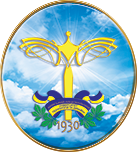Please use this identifier to cite or link to this item:
https://er.knutd.edu.ua/handle/123456789/28225| Title: | Peculiarities and development strategies of architectural decorative art in the ancient Huizhou region, China |
| Other Titles: | Особливості та стратегії розвитку архітектурного декоративного мистецтва в стародавньому районі Хуйчжоу, Китай |
| Authors: | Xue, Mei Bulhakova, T. V. |
| Keywords: | стародавній Хуейчжоу архітектурне декоративне мистецтво різьблення по дереву різьблення по каменю різьблення по цеглі естетичні характеристики цифрова реконструкція ancient Huizhou architectural decorative art wood carving stone carving brick carving aesthetic characteristics digital reconstruction |
| Issue Date: | 2024 |
| Citation: | Xue Mei. Peculiarities and development strategies of architectural decorative art in the ancient Huizhou region, China = Особливості та стратегії розвитку архітектурного декоративного мистецтва в стародавньому районі Хуйчжоу, Китай [Текст] / Mei Xue, T. V. Bulhakova // Art and Design. - 2024. - № 3 (27). - С. 121-133. |
| Source: | Art and Design |
| Abstract: | Метою цього дослідження є проведення всебічного аналізу стародавнього декоративного мистецтва Хуейчжоу, визначення його естетичних, символічних і технологічних характеристик, а також вивчення шляхів його розвитку в сучасну епоху за допомогою цифрових технологій. Це дослідження використовує іконографію, аналіз літератури, порівняльні дослідження та інші методи для класифікації та теоретичного узагальнення малюнків і текстових матеріалів. Дослідження аналізує причини становлення декоративного мистецтва в стародавньому Хуейчжоу. Визначено естетичні та технологічні особливості декору в трьох основних видах традиційних ремесел цього регіону. На основі аналізу орнаментів, візерунків, форм, їх композицій, семантики та технологій виготовлення декоративне мистецтво Хуейчжоу систематично класифіковано з точки зору символічного та культурного значення, а також технічних методів та інструментів виробництва. Розкривається соціальна функція, символіка та естетична цінність декоративного мистецтва Хуейчжоу. Крім того, демонструються перспективи розвитку та поширення цього стародавнього мистецтва цифровими засобами. Вперше архітектурне декоративне мистецтво Хуейчжоу було систематично класифіковано з точки зору естетики, семантики та технологій. Його унікальне мистецьке значення розкрито через детальний аналіз композицій, їх символічного значення, матеріалів і технологічних процесів. Було також сформульовано стратегію оцифрування та успадкування "Трьох різьблень" Хуейчжоу (дерево, камінь і цегла), спрямовану на захист і популяризацію цієї нематеріальної культурної спадщини за допомогою сучасних наукових і технологічних засобів для реалізації прикладної цінності стародавнього мистецтва в сучасному дизайні. Результати цього дослідження можуть бути застосовані такими професіоналами, як цифрові художники, дизайнери, інженери та інші, у різних галузях мистецтва та дизайну в стародавньому регіоні Хуейчжоу для створення унікальних робіт і отримання досвіду шляхом інтеграції цифрових технологій із традиційним декоративним мистецтвом. Purpose of this study is to conduct a comprehensive analysis of the ancient decorative art of Huizhou, identifying its aesthetic, symbolic, and technological characteristics, as well as exploring its development pathways in the modern era through the use of digital technologies. This research employs iconography, literature analysis, comparative studies, and other methods to classify and theoretically summarize drawings and textual materials. The study analyzes the reasons behind the establishment of decorative art in ancient Huizhou. It identifies the aesthetic and technological features of the decor in three primary types of traditional crafts in this region. Based on the analysis of ornaments, patterns, forms, their compositions, semantics, and manufacturing technologies, the decorative art of Huizhou is systematically categorized from the perspective of symbolic and cultural meaning, as well as technical methods and production tools. The social function, symbolism, and aesthetic value of Huizhou's decorative art are revealed. Additionally, the prospects for developing and disseminating this ancient art through digital means are demonstrated. For the first time, Huizhou's architectural decorative art has been systematical ly categorized from the perspectives of aesthetics, semantics, and technologies. Its unique artistic significance has been unveiled through a detailed analysis of compositions, their symbolic meaning, materials, and technological processes. A digitization and inheritance strategy for Huizhou's "Three Carvings" (wood, stone, and brick) has also been formulated, aimed at protecting and promoting this intangible cultural heritage through modern scientific and technological means to realize the applied value of ancient art in contemporary design. The results of this study can be applied across various fields of art and design in the ancient Huizhou region by professionals such as digital artists, designers, engineers, and others, to create unique works and gain experience by integrating digital technologies with traditional decorative art. |
| DOI: | 10.30857/2617-0272.2024.3.10 |
| URI: | https://er.knutd.edu.ua/handle/123456789/28225 |
| ISSN: | 2617-0272 |
| Appears in Collections: | Наукові публікації (статті) Art and Design Кафедра дизайну інтер'єру і меблів (ДІМ) |
Files in This Item:
| File | Description | Size | Format | |
|---|---|---|---|---|
| artdes_2024_N3_P121-133.pdf | 1,08 MB | Adobe PDF | View/Open |
Items in DSpace are protected by copyright, with all rights reserved, unless otherwise indicated.
